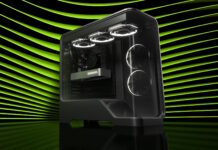PlayStation 3 recently gained support for folding@home and the consoles available in Europe already has the new PS3 client installed. The Folding@home project is used to find cures for cancer and Alzheimer by calculating protein folding. With more computing power you can investigate how more protein foldings in a given time and thus reduce the amount of time needed to find a cure. The latest breakthrough for folding@home was when it launched its GPU client for ATI’s Radeon circuits, which offered some impressive performance compared to today’s processors. That was until the PS3 client was released and climbed to the top.
The Cell processor, and other hardware, of the PlayStation 3 is very well suited for a parallel workload and now it seems that PS3 may be the best thing that ever happened to folding@home. In only a few days, 35 000 PS3 users have climbed to the top of the list at folding@home and done so with a brutal superiority. The PS3 machines had supplied 743 of the 990 teraflop folding processes that had been performed since the last measurement and this means that PS3 has tripled the performance of the project, despite the fact that the PS3 machines only make up 13% of the total number of machines. This really proves the performance of the Cell processor with these kinds of applications.


















